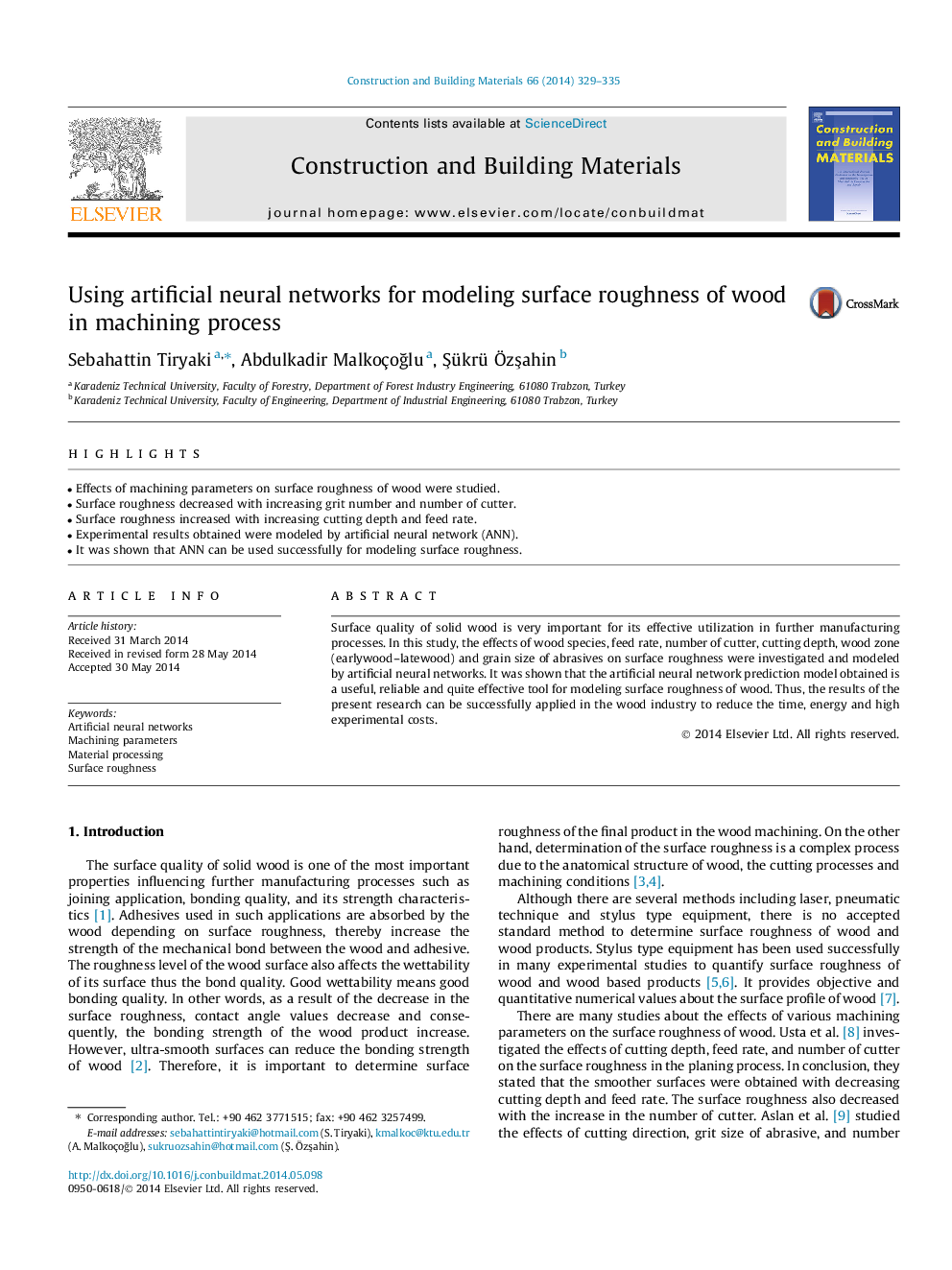| Article ID | Journal | Published Year | Pages | File Type |
|---|---|---|---|---|
| 6722722 | Construction and Building Materials | 2014 | 7 Pages |
Abstract
Surface quality of solid wood is very important for its effective utilization in further manufacturing processes. In this study, the effects of wood species, feed rate, number of cutter, cutting depth, wood zone (earlywood-latewood) and grain size of abrasives on surface roughness were investigated and modeled by artificial neural networks. It was shown that the artificial neural network prediction model obtained is a useful, reliable and quite effective tool for modeling surface roughness of wood. Thus, the results of the present research can be successfully applied in the wood industry to reduce the time, energy and high experimental costs.
Related Topics
Physical Sciences and Engineering
Engineering
Civil and Structural Engineering
Authors
Sebahattin Tiryaki, Abdulkadir MalkoçoÄlu, Åükrü ÃzÅahin,
